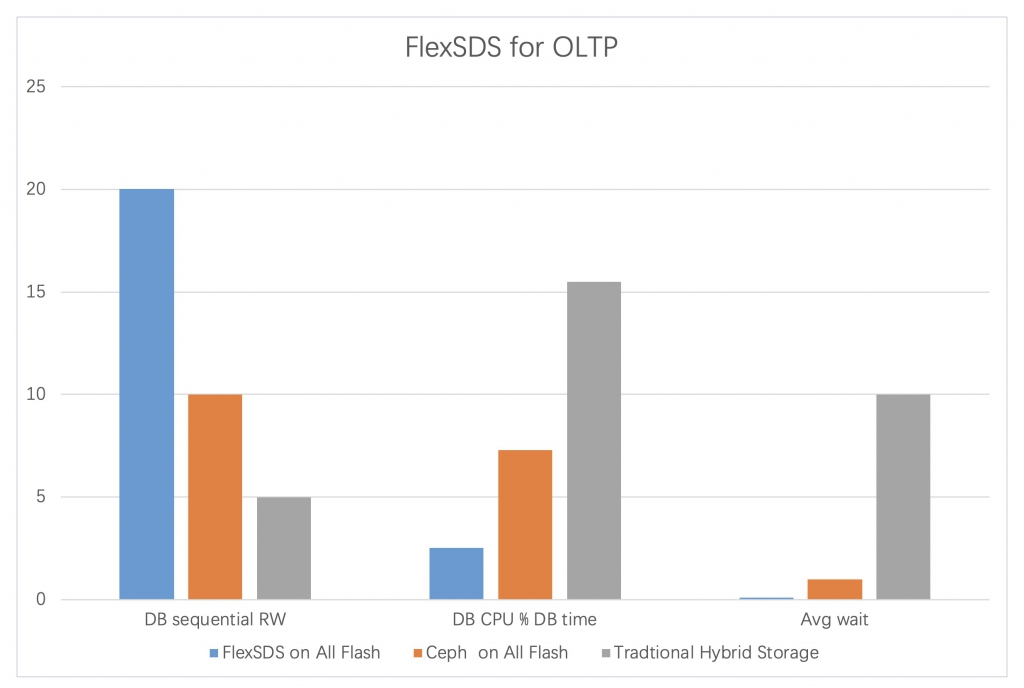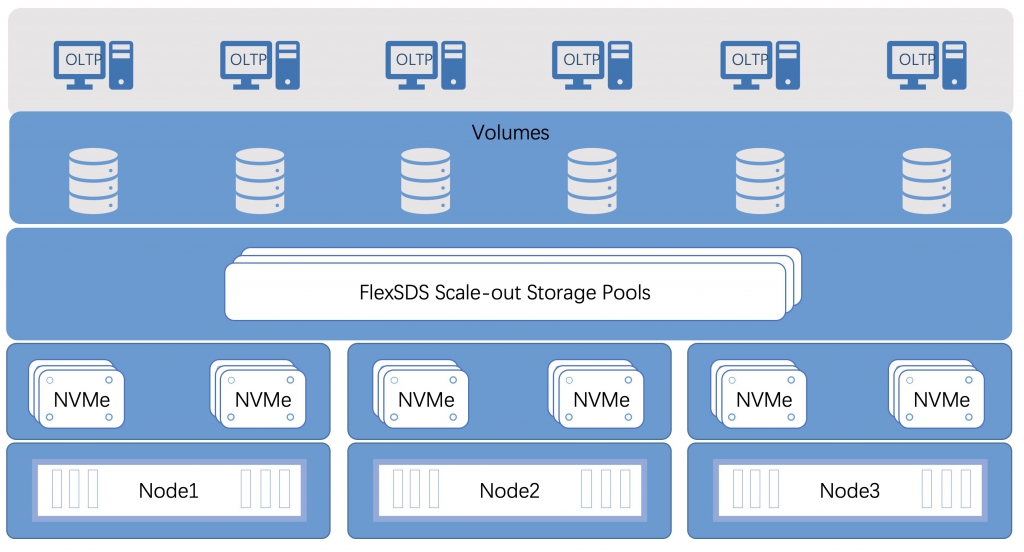In OLTP services, it is unlikely for a database to cache all data in the buffer. Therefore, the calculations and data access operations are performed in alternating orders, and the CPU has to frequently wait for I/Os to be completed before it can compute data, therefor OLTP much care about latency.
When HDD storage processes I/Os, users have to wait for the hard disk to execute seeks and disk rotation operations. These mechanical operations produce high latency (around 10 ms), significantly impacting overall performance of the OLTP services, for SATA SSD and traditional model of NVMe access (through /dev/nvmeXnY) will take more than 150us because of going through kernel (due to swap context, interrupt, syscall etc). The FlexSDS use full user mode stack, avoid all latency related to the kernel, providing <20us in full server side stack (including RDMA network to client), then the performance of the database OLTP service system will be largely determines the productivity of the enterprise, which helps enterprises to grow business, improve system availability, and enhance quality of service.

Key performance indicators: TPS and average transaction response time. TPS indicates the number of transactions processed per second. The higher the TPS, the higher the concurrency is. The average transaction response time indicates the speed to finish operations. The shorter the response time, the better the user experience. That is exactly what FlexSDS working for: high bandwidth and ultra-low latency.

FlexSDS is a software-only solution that runs on industry-standard hardware (any x86 based machines). It supports unlimited capacity per node and up to 2 PB of each storage pools. To supporting OLTP service, It could be external storage or HCI storage, by providing thin provisioning volume, log structured volume or RAW volumes, and export them over SAN protocol.
For working in private and hybrid cloud FlexSDS brings the ability to run any application at any scale, fast time-to-value, and non-disruptive scale-up or scale-out.
FlexSDS other Key features for OLTP include:
support hardware NVMe SSD (Kernel-bypass), RDMA (Infiniband, RoCE, and iWarp), fully support all-flash-array.
Fast deployment and scaling of storage resources, and dynamic workload scaling and balancing.
Designed for next generation hardware, kernel-bypass, lock-free model, zero-mem-copy, high CPU cache optimize to provide extreme low latency.
Parallel and high concurrent I/O technology and high utilization of storage and network resources.
multiple node and data copies, high availability and auto-recovery.
efficient asynchronous replication
Low total cost of ownership (TCO)
single-pane management.
supports up to 1024 server nodes and can offer block service to Windows Hyper-V, VMware vSphere, Citrix XenServer or KVM-qemu hypervisor.
Protocol supports: iSCSI, iSER, and NVMe over Fabrics
unlimited space-optimized snapshots and clones, periodic or continuous asynchronous long-distance replication.
